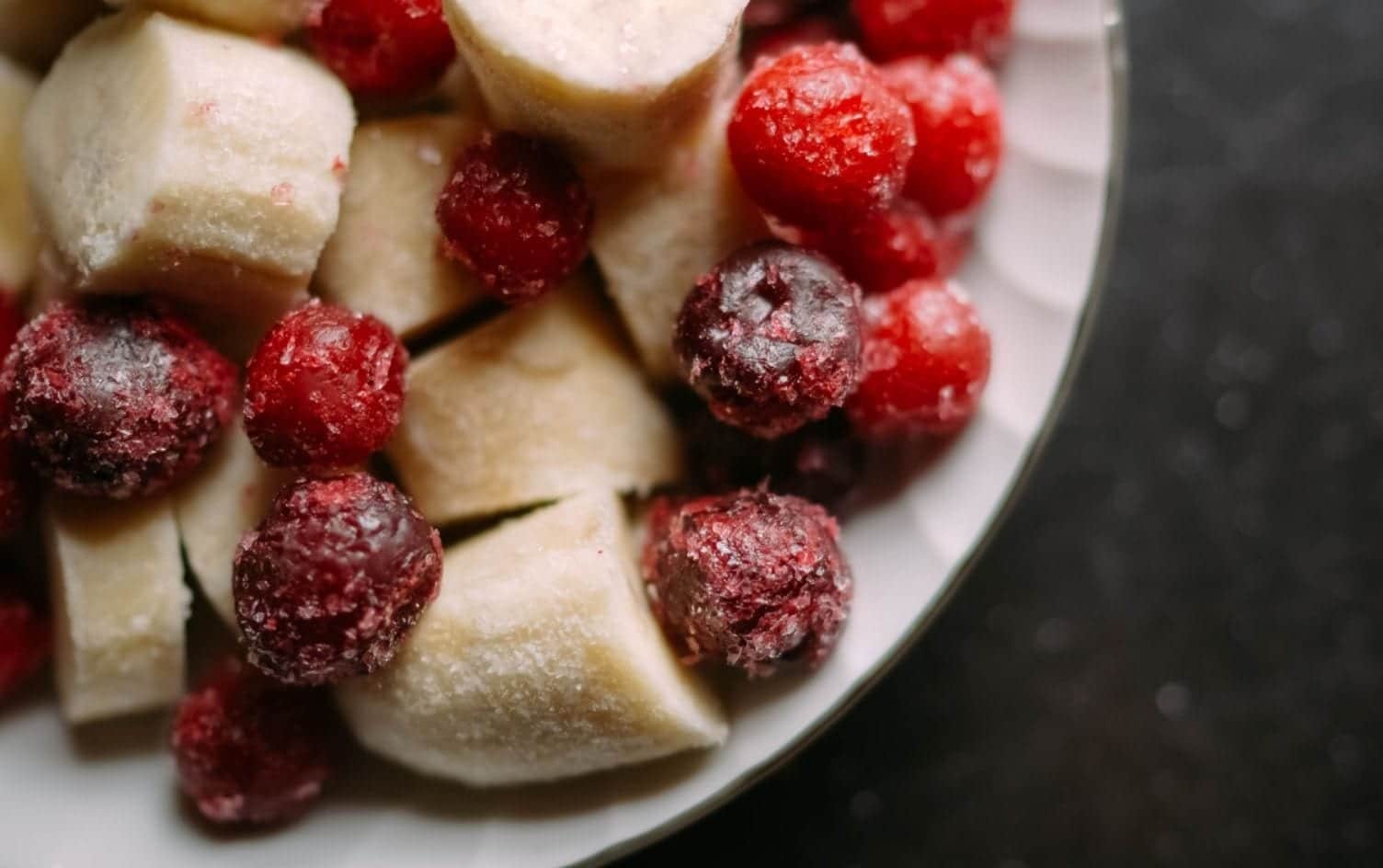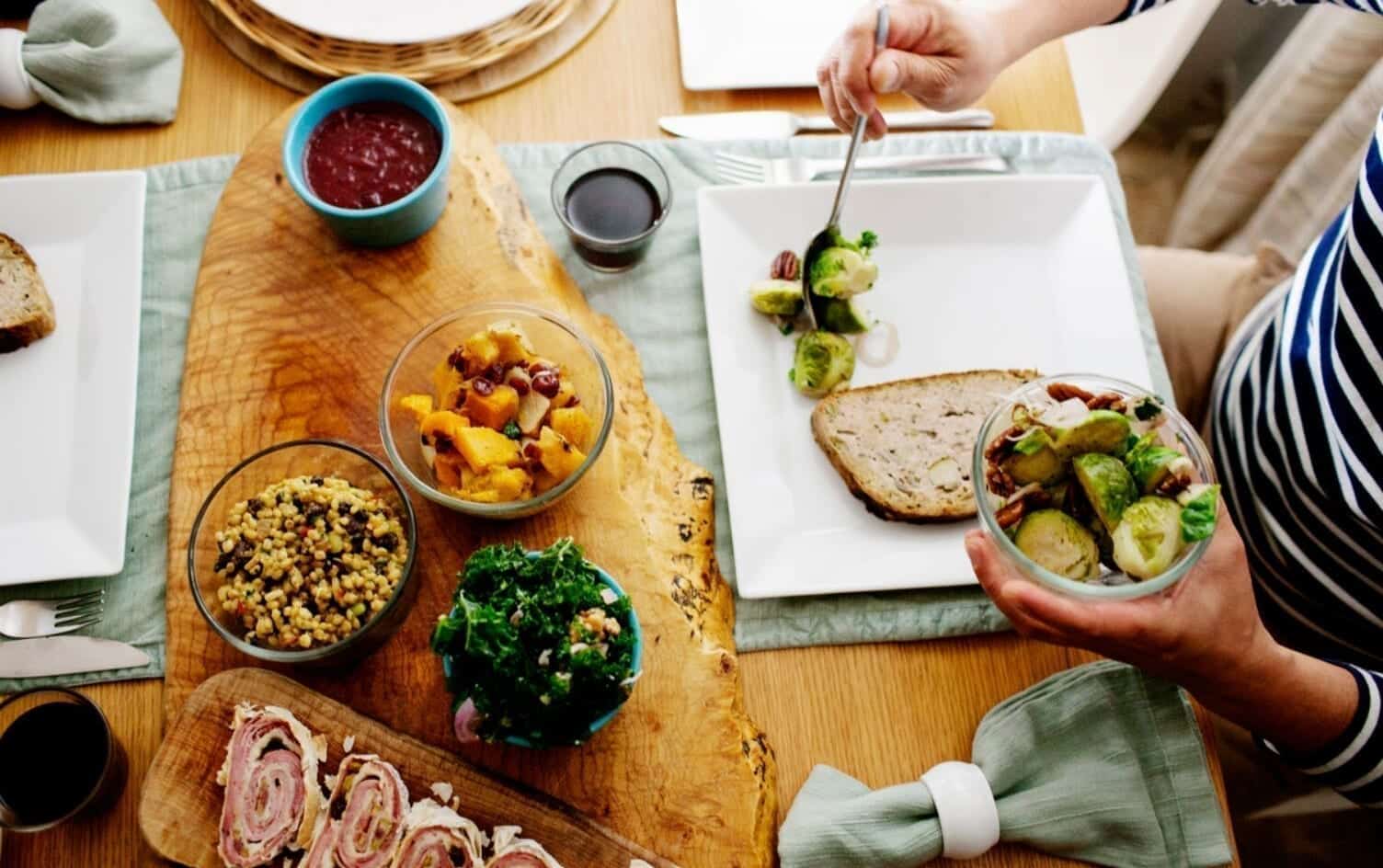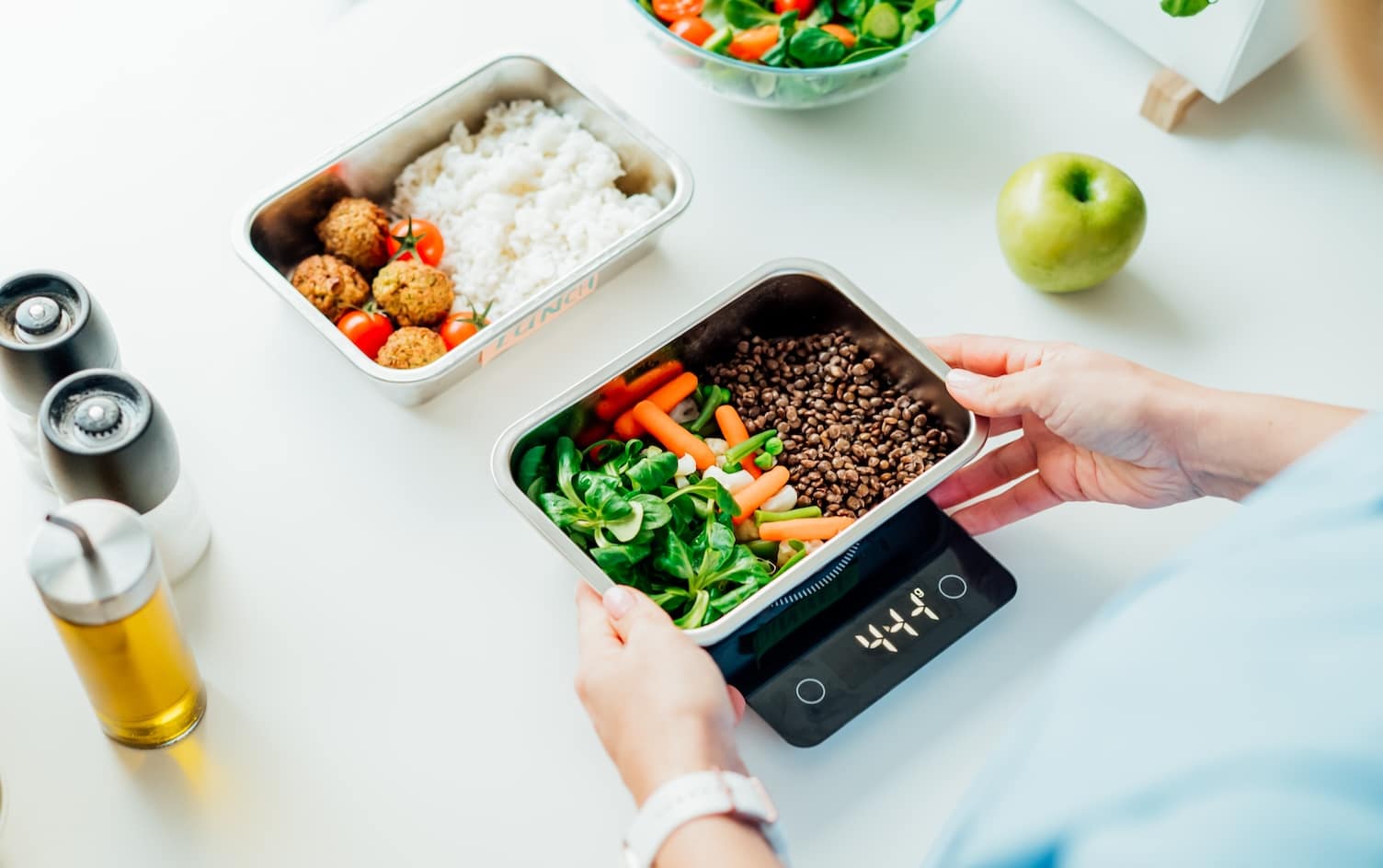Frozen foods have always been nutritious and convenient — especially when you’re minimizing trips to the grocery store. What’s more, freezing perishables you won’t be able to eat before they go bad can help avoid food waste. With grocery store shelves occasionally being empty and the need to economize food budgets, figuring out how to preserve what you have on hand is crucial.
Some frozen foods can even cut down on on meal prep time, which is key for anyone working from home and those taking care of children who are not in school at the moment. Add to that the desire to get the nutrients you need to stay healthy, and the freezer offers many solutions.
To that end, nutrition pros share their favorite healthy frozen picks and tips for making foods last longer.
LOG THESE FOODS AND MORE PANTRY STAPLE RECIPES IN THE MYFITNESSPAL APP!

These can last for months in the freezer, says Monica Auslander Moreno, RD. “My favorite is a chickpea coconut curry. Sauté onion and tricolor peppers in some olive oil and salt, add a can of coconut milk, a can of crushed tomatoes and a can of chickpeas. Add in 1 tablespoon of turmeric (which has anti-inflammatory properties), 1 tablespoon of curry powder, some pepper and a pinch of cayenne. Cover and let simmer for 10–20 minutes.” Once the soup has cooled, freeze it in freezer-safe containers or resealable bags. When you’re ready to eat, let it thaw in the refrigerator until you can break it up easily, then reheat in a pot, advises Moreno.

For many, spending more time at home means baking more than usual. Conveniently, you can use your freezer to make your creations last longer. “I always have some kind of muffin or granola bar in the freezer,” says Kara Hoerr, RD. “That way, they stay fresh for whenever I want one. After they’ve cooled, I wrap each one individually in plastic wrap and place in a freezer bag. When a muffin or granola bar sounds good for breakfast or a snack, I unwrap and pop it in the microwave for 30 seconds.”

Whole grains like quinoa, brown rice, farro and more are actually freezer-friendly when cooked. That means you can prep a large amount of grains all at once, then defrost them as needed to cut down on cooking time. “Once cooked, allow the grain to cool for about 20 minutes until it reaches room temperature,” recommends Toby Amidor, RD. “If you have a large batch, divide it into smaller batches so it can cool faster. If you plan on using individual portions, store 1 cup (150g) or so in individual freezer-safe containers. Or, for a family of four, store a few cups in a larger container.” Label containers with the date; frozen cooked grains can be stored for up to 2 months.
The night before you’d like to eat the grains, place the container in the refrigerator overnight to defrost. To reheat, Amidor recommends placing your grains in a microwave-safe container or bowl with a splash of water, then heating on high for about 30 seconds to 1 minute, depending on the quantity.
Note: Don’t leave cooked grains out for more than 2 hours at room temperature or over 1 hour at hotter temperatures. This presents an opportunity for bacteria to grow, which might end up making you sick later.

Roasted veggies add nutrition and flavor to meals, but they take a long time to cook. That’s why Hoerr cooks them in big batches, then freezes 2-cup (300g) portions in freezer-safe glass containers for later. “You can freeze almost any vegetable, but I’ve found roasted root vegetables work the best, such as sweet potato, squash, carrots and beets. They’re not as crisp as when you first roast them, but they work really well added to salads.” Simply thaw them in the fridge the day before you want to use them.

Already-frozen veggies are always a solid choice, but you can also freeze any vegetables you have at home that are about to go bad, especially chopped greens. “If I am unable to use my greens before they go bad, I toss them into the freezer in a large Stasher reusable bag,” says Kristen Carli, RD, owner of Camelback Nutrition and Wellness. Once frozen, these provide a quick and easy way to bump up the nutrition of any hot meal. Plus, you often don’t even have to defrost them. “I’ve found that kale can easily go into any soup or pasta sauce from frozen,” Carli says.

If you want to get really creative with not wasting food, give this a try: “Keep veggie scraps like onion peels, garlic skins, carrot tops and broccoli stalks in an extra-large bag. Then once a week, you can use them to make a batch of veggie stock.” Just place all of the veggie scraps (6 cups (900g) or more) and 8–12 cups of water in a large stock pot and simmer for 3–4 hours. Alternatively, you can use a pressure cooker and cook for 15 minutes. Once cooked, strain and store in freezer-safe containers. The broth is great for adding flavor and nutrients when cooking rice, dried beans and as a base for soup.

Frozen shrimp is a favorite for getting a large amount of protein for few calories, says Amanda A. Kostro Miller, RD. Plus, a big bag of frozen shrimp lasts a long time. “I like buying shrimp that is already shelled and deveined but uncooked,” says Kostro Miller. “Add it to stir-fries, mac and cheese or grain bowls.”

“I always have edamame beans in my freezer to add to meals like pasta dishes, stir-fries, salads and soups,” Miller notes. “Edamame beans are a great way to get plant-based protein, and they’re also notable for their high fiber, vitamin K, iron and folate content. I buy them plain, frozen and deshelled so I can add them straight into a hot dish while I’m cooking.”

“When bananas start to get too ripe to eat, I line a plate with wax paper, slice up the bananas and spread them on the plate to freeze,” says Hoerr. “Once they’re frozen, I transfer them into a freezer bag. This makes it easy to pull out for a snack (i.e. paired with peanut butter) or to add to smoothies.”

While avocados are an excellent source of healthy fat, they’re notorious for browning quickly. Good news: you can freeze them at peak ripeness. “Place the whole avocado in the freezer,” instructs Kylie Ivanir, RD. “When you’re ready to eat, run it under hot water for 30 seconds, then let sit on the counter for 30 minutes.” You now have a ripe, fresh avocado that’s great for spreading on toast, adding to smoothies or even using in baked goods.

“Marinated meats can last in the freezer for several months and can easily be the star of any dish,” says Haley Golich, RD. “Simply place the meat in a freezer-safe bag, add the marinade and toss to evenly coat. Keep the meat and marinade in the fridge for a few hours to maximize meat tenderness and flavor, then store in the freezer for up to 9 months. Before cooking, run the freezer bag under water for 1–2 minutes to separate the meat from the bag.”
When cooking the meat, you have several options. You can heat it in a slow cooker on high for 6–8 hours, in a pressure cooker for 15 minutes, in a skillet on medium-high heat for about 15 minutes, or until cooked through. Add in some frozen vegetables and a grain, and you have the ingredients for a quick, delicious and easy freezer meal,” adds Golich.

“When we’re tired and unmotivated, preparing protein sources might not be high on your to-do list,” points out Abby Vichill, RD. But it doesn’t have to be that way. “If you have delicious and convenient staples to prepare in less than 10 minutes, you’re more likely to stay on top of your goals. And we know that a high-quality protein source at every meal is the key to creating satiety in those times when we’re vulnerable to overeating.”
The fix: Opt for burgers, chicken sausage, salmon patties, black bean burgers and grilled chicken that are frozen but already fully cooked. “These sources can all be defrosted quickly by microwaving 15–20 seconds and then finishing in the skillet for extra crispness,” says Vichill.




